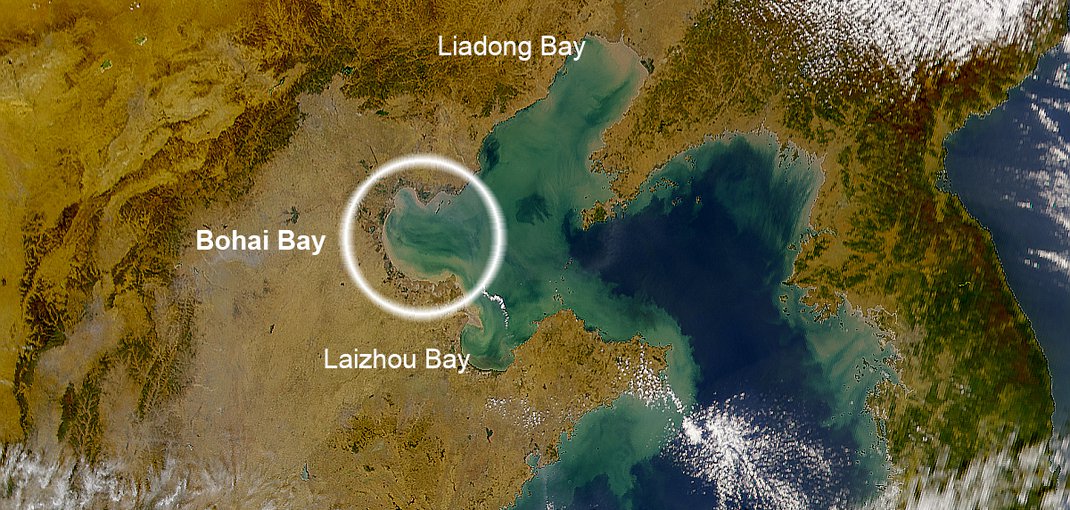
April 5, 2018
Research Highlight
Geologic Clues to Ancient Climate
Uncovering the Chronology of Paleogene Sediments from the Bohai Bay Basin

This SeaWiFS pass over the Bohai Sea. Bohai Bay is one of three bays that make up the Bohai Gulf (or Bohai Sea). The Bohai Gulf is the innermost gulf of the Yellow Sea.Image credit: SeaWiFS Project, NASA/Goddard Space Flight Center, and ORBIMAGE.
Scientists have provided detailed information about the age of materials found in the Bohai Bay Basin (BBB) of northern China. The BBB contains about 5000 meters of sediment that accumulated at a relatively steady pace over the Paleogene (e.g. from the end of the Cretaceous Period 66 million years ago (Ma) to the beginning of the Neogene Period 23 Ma).
The team was able to construct an absolute astronomical time scale (ATS) for the BBB. ATS tracks variations in sediment sequences that can be tied back to climate variations related to the Earth’s orbit and tilt relative to the Sun. These variations can be used as a geologic ‘clock’ to date sediments at extremely high resolutions, down to tens of thousands of years.
The study indicates that sedimentation occurred at an average rate of 130 meters per million years. The team was able to re-calibrate ages of features within the BBB, including biozones, rifting episodes, and paleoclimate stages. This allowed for a re-evaluation of the relationship between sedimentation and the climate history of East Asia. The results supports the idea that the region was cooling and drying throughout the Eocene ( 56 to 33.9 Ma).
The paper, “Sequence-Dependent Interfacial Adsorption and Permeation of Dipeptides across Phospholipid Membranes,” was published in the journal Palaeogeography, Palaeoclimatology, Palaeoecology. The work was supported by NASA Astrobiology through the Exobiology & Evolutionary Biology Program.